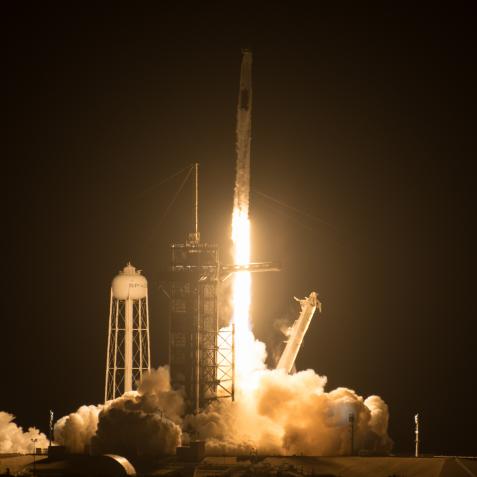
Barcroft Media
When and Where is the Chinese Rocket Falling Back to Earth?

What goes up, must come down. On April 28th, a Chinese Long March 5B rocket went up, successfully delivering its payload, a new section of the Tianhe space station, into orbit. But now the 21-ton rocket is coming down, uncontrolled.
Most rocket boosters don’t make it into orbit themselves. Instead, their job is to heave their cargo to a fast enough speed to achieve orbit (for low-Earth orbit, about 17,000 mph). Once they release their cargo, mission designers typically send the rocket on a controlled parabolic trajectory, ditching the spent rocket in some isolated patch of ocean--which I’m sure is pretty scary for the creatures of the sea, but not at all dangerous for humans.
With the Long March series, the Chinese seem to have a different strategy. In May of last year, a Long March 5B didn’t come down gracefully but instead ended up (accidentally, or otherwise, we don’t know) in a low orbit of its own. While it was technically orbiting the Earth, the drag from our atmosphere was enough to suck energy from it, eventually bringing it back down to the ground, completely uncontrolled. It missed hitting the United States by a mere 15 minutes but was going so fast that it crashed into Cote d’Ivoire, Africa.

STR
This photo taken on April 23, 2021 shows the Long March 5B rocket, which is expected to launch China's Tianhe space station core module on April 29, at the Wenchang Spacecraft Launch Site in southern China's Hainan province.
And now it’s happening again. It’s extremely difficult to predict where this 100-ft-long rocket will land because of the complexity of modeling and predicting an uncontrolled reentry through our atmosphere. The rocket makes a complete circle around the Earth every 90 minutes, and so its possible landing zone includes every hemisphere of our planet.
Hopefully it just crashes into the ocean, which is likely since oceans make up 70% of the surface of the Earth. But it’s not guaranteed–based on current estimates, pieces of the Long March could land anywhere from New York City to Perth, Australia.
Our atmosphere will help us out a lot by burning away pieces of the rocket as it falls down. But for dense, heavy pieces of metal, like the gigantic engine that powers the rocket, will likely remain intact.

Barcroft Media
WENCHANG, CHINA - APRIL 29 2021: A Long March-5B Y2 rocket, carrying the Tianhe module for the Chinese space station, blasts off from the Wenchang Spacecraft Launch Site in Wenchang in south China's Hainan province Thursday, April 29, 2021. Tianhe, with a total length of 16.6 meters and a maximum diameter of 4.2 meters, is the largest spacecraft developed by China.
Last year, the Chinese drew international ire for allowing such a massive object to descend uncontrolled. Prior to the first Long March fiasco, it had been 30 years since anything weighing over 10 tons had been allowed to reenter in an uncontrolled fashion. But it seems that the hopes of the international community that the Chinese would be able to control their rockets have been dashed.
Due to the erratic nature of its orbit, the US Space Force is monitoring the situation but will only be able to give a one or two-hour warning before it lands. The best guess is that it should land this Saturday or Sunday.



















